Visit your favourite destinations |
| A Report from birdtours.co.uk |
Bulgaria, September 2004,
Chris Wormwell (with additional information by Jon Lowes)
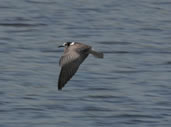 |
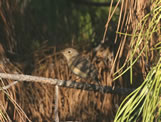 |
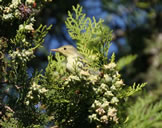 |
For the last 20 or so years, Keren and I (and two friends, Jon Lowes and Ray Banks) have been spending our annual autumn holidays in Cornwall. However, this year, we visited the Black Sea coast of Bulgaria between 11th. & 25th. September.
Although primarily a birdwatching trip, Ray also has a big interest in butterflies and dragonflies which all added to the interest (but caused us to miss getting Black Woodpecker photos!).
The following report shows which of the 202 (+2) species recorded, and where they were seen (several illustrated with photos). But first, some basic information:
Climate - During our two weeks the weather was hot and sunny every day (bar one) with a daily average temperature of about 23°C. A breezy, but warm, wind would often pick up in the late afternoon on the coast.
Currency: - Lev (plural = Leva). During our time there the exchange rate was around 2.8Leva to the £sterling. It should be noted that you should only exchange currency at banks or hotels and not in the many 'Change booths' that litter the streets, as you may find you will be ripped-off. Keren and I took sterling notes with a small amount of Leva (£100) to cover us over the 1st weekend. As it turned out it was mid-week before we needed to change any currency. Traveller's Cheques are next to useless, but Jon found that using his 'hole in the wall' card worked OK.
Costs and expenditure We took far too much money! We ate out every evening and an average cost for 4x Starters, 4x Main Courses and 4x 'pints' was about 40 Leva (£15). Draught beer was approximately 35p a litre. Most of our lunches were of the 'picnic variety', which involved a daily visit (usually the night before) to the supermarket to purchase bread, water (which is apparently safe to drink from the tap), biscuits, meats, fruit, crisps etc. The average cost of these picnics was about £5 total.
Food and drink - Nothing particularly dramatic (or unpleasant) was encountered, although 'white cheese' seems to accompany everything! Meats and salads were all of a very good standard and all menus have English translations. The local beers (lagers) were all very refreshing - our particular favourite being one called 'Zagorka' (it's nectar of the Gods after a days birding, believe me).
Hotel and resort - We stayed at the Park Hotel Oasis in New Nessebar, which was booked through Balkan Holidays (of London) http://www.balkanholidays.co.uk/ Balkan Holidays also operate their own charter flights. The hotel turned out to be one of the best around the area (judging from comments of other holiday makers we spoke to). It was very clean with pleasant staff. All the rooms had a small fridge and TV (now we know where The Fast Show got it's ideas for Channel 9 from!) and a balcony overlooking the gardens. Unfortunately there was no Air-conditioning but a large and fairly quiet fan was provided. Our room was on the 4th (top) floor and, as there were no lifts, it was a bit of a haul dragging our luggage up there on the 1st day. Still, it was good exercise!
From our perspective, the very best thing about the hotel was it's extensive gardens which provided us with many good birding opportunities - woodpeckers, flycatchers, shrikes and warblers were all seen whilst enjoying a late afternoon drink in the outside covered bar! Also, the beach is just down a flight of steps at the back of the hotel gardens and there's a particularly nice restaurant overlooking the sea where we ate most evenings.
New Nessebar itself is a fairly typical tourist-orientated resort with a decent supermarket, many cafes and lots of souvenir shops selling all sorts of tat. Although, like most of the built-up areas we passed through, it does look a little run-down and a tad salubrious in parts. That said, there was never any trouble and all the people were very friendly. Across a small causeway is Old Nessebar, which is a 'must' for doing your gift shopping.
Car Hire - We booked our vehicle through Hertz before leaving the UK. As the costs (£360 for a 1.4 Seat Ibiza for 12 days) were to be split 4-ways, it wasn't overly expensive. Many tour companies warn against hiring a car whilst out there, but it was vital for us. That said, driving on Bulgarian roads is not for the faint-hearted. Bulgarians like their speed (assuming they aren't driving an ancient Lada, Skoda, Wartburg or Trabant!) and many of the road surfaces are very poor, although the main coast road (E87) is fine - which makes the locals drive even faster! Fuel costs are much less than we pay in Britain. Average price was 140Leva/litre (about 50p) - unleaded is marked as '95H' (the octane rating). Make sure your hire car has air-conditioning.
Out and about and finding your way around -The hardest thing for us was finding our way around. All the road signs are in Cyrillic with only the major towns having an 'English subtitle'. As most of our birding was done in the 'back of beyond', we were heavily reliant on the 2 road maps (Cyrillic and English) and, once nearer to the sites, the two birding guide-books we took with us ("Finding Birds in Bulgaria" by Dave Gosney and "Where to Watch Birds in Bulgaria" by Petar Iankov ISBN 9546420115). On the whole these two guidebooks (and a modicum of geographical common sense) were enough for us to find all the recommended sites. We also found that, no matter where you pulled-up for "a quick 5 minute scan", good birds could be seen anywhere and 5 minutes would often become an hour!
Visitors to Bulgaria have nothing to fear from just stopping in the middle of no-where and going birding. Everyone we 'encountered' would just wander past and give a casual wave without a second glance. We never once felt threatened.
Local Guide - If it is your intention to stay coastal during your stay, then a guide is not at all necessary. However, if you wish to see some of the more difficult species (Wallcreeper and Vultures for example), then a guide is a must. We hired an English-speaking guide for 3 days (17th./18th./19th.) and it was a positive boon, as most of the inland sites he took us to are not in the guidebooks. This cost us £29 a day and we paid all his expenses and for his accommodation on the two overnight stays (about £12 per person). The entire three-day trip (including fuel) cost less than £100 each and was worth every penny (adding 40+ species to our list). Our guide's name was (and probably still is!) Stoyan Nikolov. Stoyan is a 'professional ornithologist and guide'. He has illustrated books on Bulgarian birds and has a book in pre-publication covering raptor identification. He was a very pleasant chap (aged about 25) and really knows his birds. Stoyan can be contacted direct through his Email address: nikolovstoyan@hotmail.com
Alternatively you can contact office@birding-in-bulgaria.com (My contact was called Evgeny) and they will organise a guide for you (it was through this company that we met Stoyan).
The birding - All the sites we visited were very easy to cover with no arduous walking at all.
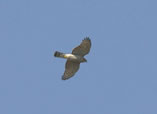 |
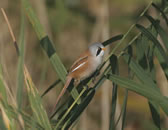 |
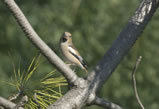 |
We found the coastal saltpans were best visited in the mornings as the sun (and the resultant heat haze), later in the day, could make viewing of distant birds difficult at best. One thing we did notice was that many of the birds (waders and gulls) in these areas were very 'nervy and flighty' and close approach was almost impossible. Photographers (non-digiscoping) should aim to be on site and 'hunkered down' before 1st light if they wish to get close enough for really good shots.
Raptor watch points were best between 11am and 4pm - although brilliant sunshine and clear skies during our visit meant that many of the birds were very high in the sky and difficult to point out to other observers, let alone identify! Apparently, the best times to observe raptor migration is the day after a day's rain and with scattered clouds (this helps with pointing out the birds - but try to avoid phrases like "below the white cloud"!).
Woodlands were also best during a morning visit, as it often got very stifling under the trees during the mid-day heat. Goritza (Gorica) Forest alongside the E87 coast road, south of Varna, whilst excellent for birding, was also the worst place for biting insects.
There are extensive reed bed habitats and, as in the UK, the best way to cover them is to get a vantage point looking over them, rather than walking down the paths that cut through them - all you'll see is a flash of something as the birds cross the paths.
Finally, don't just cover the sites in the guidebooks. Any patch of 'decent-looking' habitat held good birds and we found many a good 'un just by stopping on spec' (for example, the Eminska Hills just 10k WNW of Sunny Beach resort isn't mentioned in any of the books but is a superb area of wooded hillsides overlooking a huge plain).
If you have any queries or require further information, don't hesitate to contact us at:
THE BIRD SPECIES LIST (With site information)
THE BIRD PHOTOGRAPHS (Don't expect too much!)
BUGS & BEASTS PHOTOS (Don't expect too much!)
Why not send us a report, or an update to one of your current reports?